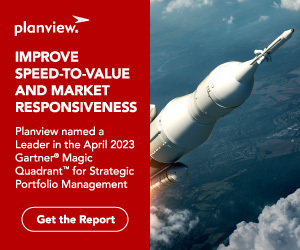Watch a three-minute overview of the Enrich Analytics features discussed in this case study.
Growth is a good thing—it means larger market share, more profit, greater reach. But it also brings challenges, as a company struggles to allocate resources to support growth without over-committing itself. A rapidly growing pharmaceutical company faced exactly this dilemma: the company was consistently missing project milestones due to chronic staffing shortfalls. Multiple project teams were competing for the same key staff members, and it seemed like people with the needed skills and expertise were always in short supply. Complicating matters further, a changing regulatory landscape meant project timelines were fluid, but schedules couldn’t be shifted easily because of the staffing shortages. Ultimately, this confluence of factors was negatively affecting the bottom line.
More staffing was needed, obviously, and the management team had plans to address it, by adding 30 percent more FTEs in the coming year. Even that, though, wasn’t as simple as it seemed: the project management organization (PMO) couldn’t formulate guidance regarding the key positions that should be hired first, because project schedules were maintained in individual MS Project files while FTE forecasts were in a separate cost-tracking system. As a result, it was hard to visualize the aggregate resource demand across all projects and across the different skill sets. Moreover, the resource availability data was located in a spreadsheet belonging to HR, structured at the individual FTE level.
All of this fragmented data storage meant the PMO couldn’t easily tell where resource shortfalls were developing. When development plans changed, the team couldn’t assess quickly whether the right FTEs would be available to execute the new schedule and how other projects would be affected.
To address these issues, and help clarify where and when additional staffing resources would be needed, the company turned to Enrich and the Enrich Analytics Platform.
Getting Resource Data into Enrich Analytics
Populating the Enrich Analytics Platform with the FTE demand and supply data was easy. Schedules for individual projects were uploaded directly from MS Project, including, for each project:
- Start and end dates of each phase
- Key activities within each phase
Monthly FTE projections for the different skill types, taken from the cost-tracking system, were then uploaded and mapped to the project phases and the individual FTE availability data were uploaded and mapped to skills to provide FTE availability by skill type. All these data sources flowed into a single, interactive dashboard that provided a real-time portfolio view of bottlenecks and surpluses.
Putting the Data to Use
The resource dashboard instantly provided a view of monthly resource demands compared against the projected supply of resources across various skill sets. A heat map format highlighted areas where resources were in short supply (orange) vs. those where there was more slack (blue). PMO teams could drill down into areas of extreme shortfall by clicking on specific roles.

Resource supply vs. demand at a glance. Orange areas are overallocated staff classes, while blue indicates underallocations.
This visualization provided a quick payoff. When the team explored the data in more detail, it became abundantly clear that specific roles were in high demand: Quality Assurance, Product Safety, and Clinical Risk Mitigation faced shortfalls within about six months—constraints that threatened the timely completion of five projects, including two high-priority projects that were slated to launch early the following year.
The company was able to move to resolve the shortage before it became critical. The tight timeline made a hiring plan impractical, but a contractor was engaged to provide expertise for a critical period, enabling four of the five projects to continue without delay. This action averted three launch delays that would have cost the company $200 million in sales in the following year.
Nimble Decision Making
The resource allocation dashboard also gave the company a new flexibility. When project plans changed, as they often did to accommodate new regulatory requirements or competitive threats, the new plans could be quickly incorporated into the dashboard. Teams could quickly assess whether the changed project scenarios were doable given the company’s resource constraints and see what the changes meant for other projects. The dashboard functionality allowed the PMO team to put some future studies or phases of projects on hold, to free up resources for other, higher-priority projects. With these data in hand, the PMO was also in a much better position to provide guidance to HR on what skill sets were most needed. Together, these capabilities allowed more projects to be executed in a timely manner, thereby improving the company’s bottom line, and allowing it to keep growing. Further, the transparency provided by the dashboard built trust and confidence in the decision making.

Meprylol project phases 2 and beyond placed on hold to alleviate demand for Clinical Risk Mitigation resources.
The Enrich Advantage
For this company, instant, real-time views of the resource picture allowed the PMO to stay ahead of resource bottlenecks and let project managers focus on creating the best alternatives for their projects, knowing that the dashboard would update in seconds, not days or weeks. Unlike most resource planning software, the Enrich scenario-planning module included the full set of project financials, including metrics like NPV, IRR, and Cost to Launch in addition to the resource views. This was a game changer for the company; it empowered teams to move from being reactive, struggling to simply keep projects on schedule, to thinking proactively about the best set of projects or project alternatives that aligned with company strategy and created most value for the company.
In this case—as is so often the case—having the right tools made all the difference.
Do the challenges faced by this company sound familiar? We would love to hear from you about the resource planning challenges you face today. How have you overcome them?





